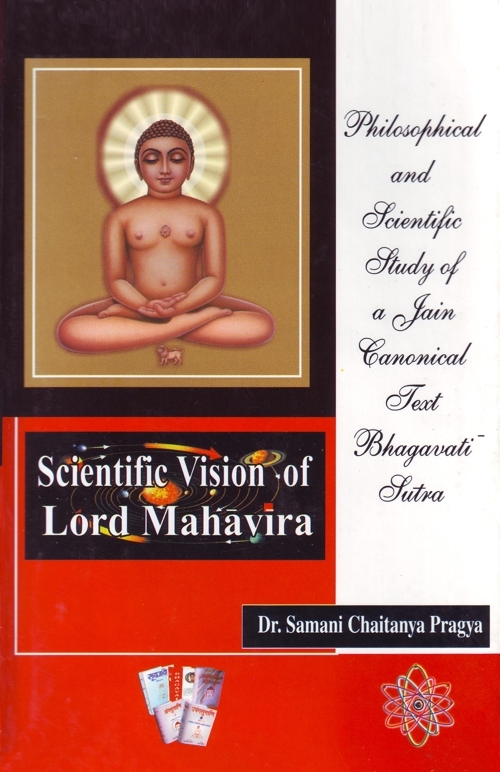The problem of soul-body relationship is discussed in many ways sometimes as the relation between soul and matter and sometimes as mindbody relationship. Metaphysically if we think of soul and matter, we find that the soul and matter are absolutely different entities. The soul is sentient while matter is non-sentient. As the Sthānāṅga Sūtra [94] declares that the sentient can never become non-sentient and the non-sentient can never become sentient. Under such circumstances, can there be any kind of relationship between them, eternally independent elements as they are?
The Bh.S[95] answers to the problem in different contexts at many places. At one place it refers to them as enjoyer and enjoyed respectively. At another place it discusses the problem as the interaction between soul and matter. And yet at another place it deals with the problem as the soulbody relationship.
The relationship becomes clear when it is asked whether a soul and matter can bind each other, contact each other, pervade each other and stick together through mutual attraction and identification.[96]
Lord Mahāvīra replied positively.[97] There is a close relationship between the two principles: soul and matter. Because of this relationship souls fall in two categories viz., 'associated with matter' and 'disassociated from matter'.[98] The souls that are mingled with matter are called worldly or bound souls. Souls untouched by matter are called liberated.
How matter attaches to soul is depicted in the Bh.S through an example of a boat full of water. The example presented by Lord Mahāvīra before his disciple Indrabhuti Gautama is as follows:[99]
"Suppose there is a lake that is full, full to the brim, overflowing, ever swelling and evenly full of water like a pitcher.
Now, some person floats a giant boat with hundred inlets and hundred pores. In such situation, O Gautama, does the boat with water constantly flowing in through the inlets and the pores continue to remain full, full to brim, overflowing, over swelling and evenly full of water like a pitcher?
Yes, it does so.
For this reason, Gautama, it is said that the souls and material bodies exist bound with each other, in contact with each other, pervading each other, stuck with each other through mutual attraction and mutual identification."
The souls entangled in worldly life are so intimately mixed up with matter that they cannot be defined independent of it. Due to this close relationship the Bh.S[100] mentions that soul can be identified through five types of colour, two types of smell, five types of taste and eight types of touch.
Acharya Siddhasena Divākara has considered the relation between soul and matter from the non-absolutistic standpoint. As he says: Soul and matter intermixed like milk and water, so it is improper to distinguish them as soul or matter. The physical organism, childhood, youth, etc., belong to the body, but it cannot be said that they are not influenced by the soul. Likewise, soul has the modes of sensual knowledge, memory etc. which cannot be characterized as unifluenced by matter. Thus, we find relationship between soul and matter, inspite of having very different natures[101].
The question is whether the nature of the relationship between the soul and matter is 'material' or 'non-material'? In its worldly career, the soul is not absolutely non-material. According to the Bh.S this relation is bilateral. It is not exclusively due to the soul or due to the matter. Soul and matter are involved as co-operative partners. This follows from the phrase "aṇṇamaṇṇasiṇehapaḍibaddhā."[102] It means that the soul has affection which attracts and assimilates, and matter has an affection which gets attracted and assimilated. This bilateral 'affection' establishes intimate relationship between the two. The relationship has been conveyed through the five expressions: bondage, contact, pervasion, affection and identification.[103] According to Acharya Amṛtacandra the mode of affection that occurs in the soul is due to it's beginning less association with matter.
 Dr. Samani Chaitanya Pragya
Dr. Samani Chaitanya Pragya

